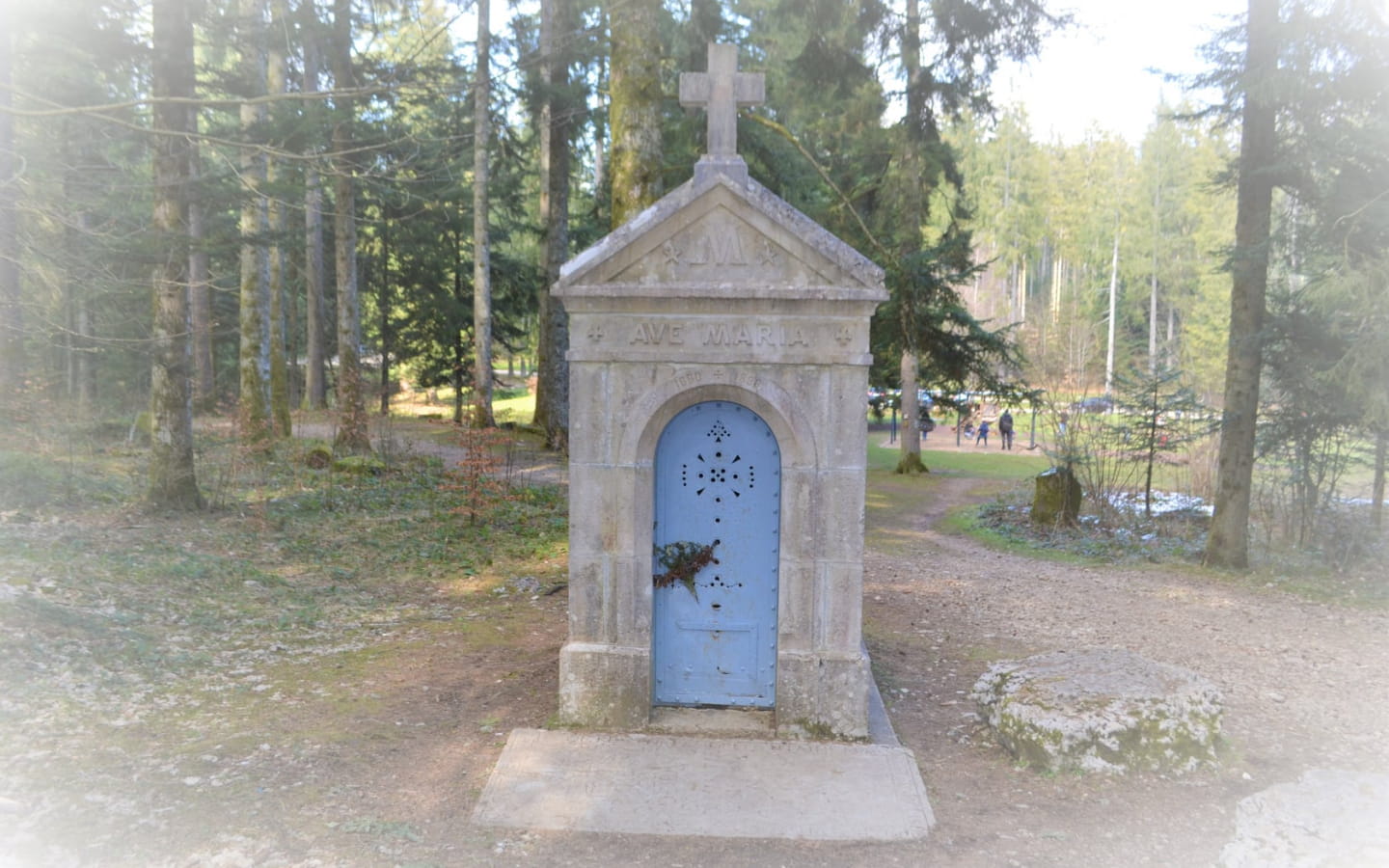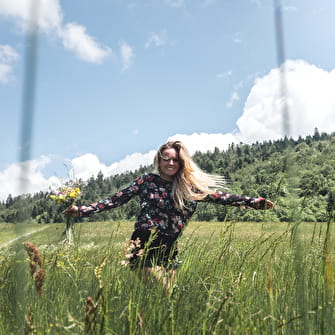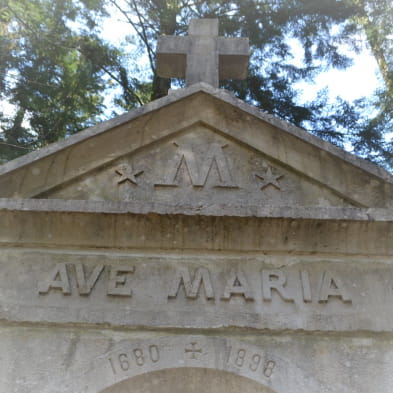
Oratoire du pas de la Vierge
At the top of the Pareuses hill, at the level of the Forest Theatre, an oratory looks like a small chapel, 1.70 m wide and 2.55 m deep.
On the façade, the splayed semicircular opening is closed by an iron door with holes in the shape of a cross. A frieze crowns the walls and supports a two-sloped stone slab roof, the joints of which are covered by four projecting ribs. Above the pediment is a stone cross. Inside, a credenza placed on the ceiling supports the statue of the Virgin of the Miraculous Medal. The floor is tiled, but in the centre there is an opening of one and a half tiles which reveals the underlying rock. An old tombstone is placed across the threshold.
Inscription on the pediment: M. On the frieze: +AVE MARIA. On the arch of the door: 1680+1898.
During the night of 3 to 4 October 1680, a violent fire ravaged the rue Montrieux and the Grande Rue as far as the church of Saint-Bénigne, which was half consumed. The fire only stopped thanks to the rain, which was interpreted as a divine intervention by the Virgin in response to the prayers of the entire population. Some people believed that the Virgin herself had appeared.
In 1859, a first wooden oratory was built by the FAIVRE family, known as Bacquillons, at the place where the Virgin supposedly appeared in the wood above. It was replaced in 1898 by a small chapel, also known as the chapel of the PASSEE, housing a statue of Mary placed on an altar, in front of the rock which is said to bear the mark of the Virgin's footprints.
Source: Les oratoires du Doubs, P.DIEUDE







